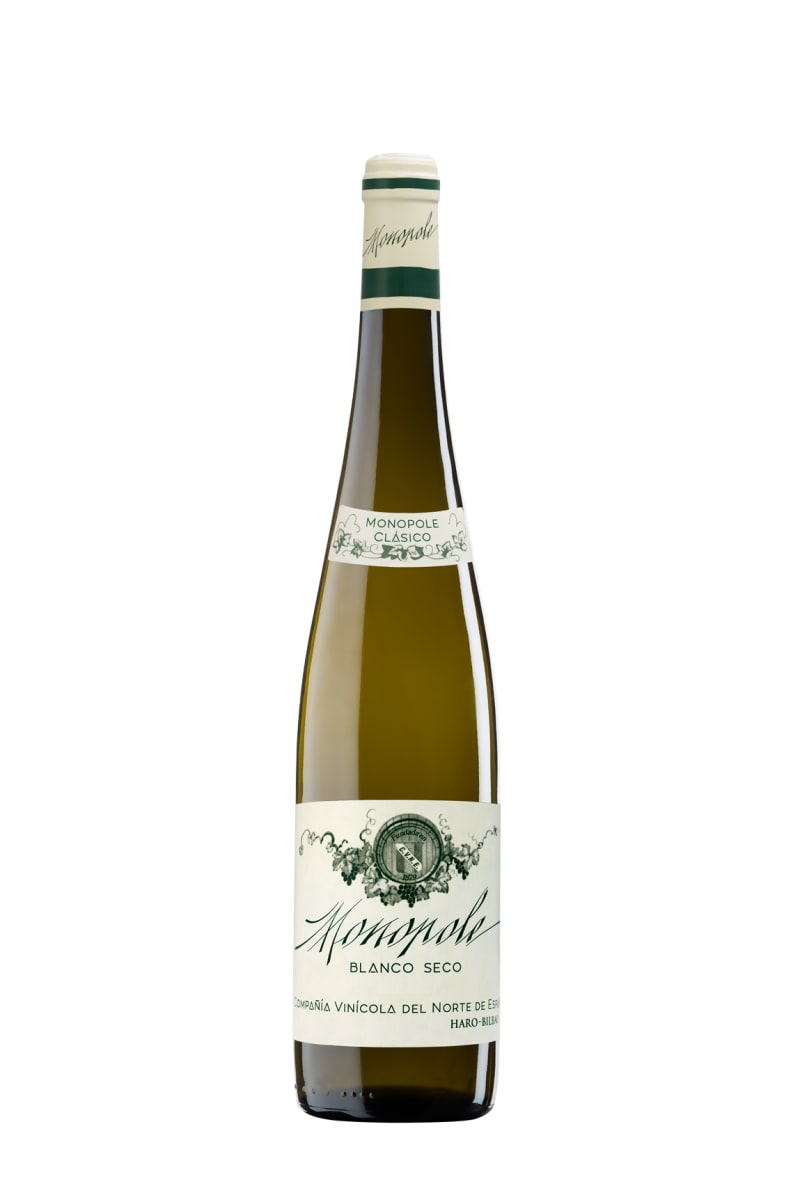Cune Monopole Clasico 2019
-
James
Suckling -
Robert
Parker



Product Details
Your Rating
Somm Note
Winemaker Notes
The grapes for this wine come from their own vineyards in Villalba de Rioja, just
over five hectares planted 15 years ago, facing east and on limestone soils. The
vines are trellised for their protection against the wind to which this vineyard is
exposed. The altitude here is over 600 meters.
Professional Ratings
-
James Suckling
Toasty nose of lemon meringue pie, roasted almonds, smoke, grilled pineapple and fudge. Full-bodied, buttery and opulent with delicious burnt-caramel and fudge character. Yet, it remains fresh. Tangy, Sherry-like hints of olives and salted almonds. Evolves. Drink now or hold.
-
Robert Parker's Wine Advocate
The white 2019 Monopole Clásico wants to take us to the wines produced with Viura and Palomino in the old times. The grapes were very healthy, picked the second half of September with power, clout and balance. It's 13.3% alcohol and has a pH of 3.25 and 5.87 grams of acidity (tartaric acid per liter of wine). What makes this white unique is that it contains a small amount of Manzanilla (the biological Sherry produced in the village of Sanlúcar de Barrameda). It's a bit shy and has subtle notes of Sherry, tasty and salty, with a long, dry finish. It slowly opens up, revealing notes of spices and aromatic herbs and a clean and balanced palate. Despite the warm year, the wine has good freshness.
Other Vintages
2018-
James
Suckling -
Wine
Spectator
-
James
Suckling -
Robert
Parker -
Wine
Enthusiast
-
Robert
Parker -
Wine
Spectator
-
Robert
Parker
-
James
Suckling









Cvne, is situated in Rioja in the traditional neighborhood of the station, where the oldest wineries of Rioja Alta established themselves, for the main reason of transporting their goods to the port of Bilbao.
In 1879, two brothers decided to set up a business in the recently flourishing trade of the wine business. C.V.N.E., Compañía Vinicola del Norte de España (The Northern Spanish Wine Company) or la Cuné, as it is commonly known in Haro, was created. This cellar still reflects the origins of the company and is kept in the traditional neighborhood of the Haro station.
The Cune winery in Haro, is made up of a group of buildings, mostly from the 19th century and arranged around a courtyard surrounded by pavilions for the purpose of wine production, aging, and bottling.

Commonly found as a single varietal white or blended with Malavasia and Grenache Blanc, Viura is a vital, leading white grape of Rioja. It also thrives in the lower elevations of the Penedes, where it takes the name Macabeo and adds aromatic and fruity notes to the traditional Cava blend with Parellada and Xarel-lo. Somm Secret—Called Macabeu in France, this versatile grape is prevalent in Roussillon where it makes still, sparkling, dry and sweet wines.

Highly regarded for distinctive and age-worthy red wines, Rioja is Spain’s most celebrated wine region. Made up of three different sub-regions of varying elevation: Rioja Alta, Rioja Alavesa and Rioja Oriental. Wines are typically a blend of fruit from all three, although specific sub-region (zonas), village (municipios) and vineyard (viñedo singular) wines can now be labeled. Rioja Alta, at the highest elevation, is considered to be the source of the brightest, most elegant fruit, while grapes from the warmer and drier Rioja Oriental produce wines with deep color and higher alcohol, which can add great body and richness to a blend.
Fresh and fruity Rioja wines labeled, Joven, (meaning young) see minimal aging before release, but more serious Rioja wines undergo multiple years in oak. Crianza and Reserva styles are aged for one year in oak, and Gran Reserva at least two, but in practice this maturation period is often quite a bit longer—up to about fifteen years.
Tempranillo provides the backbone of Rioja red wines, adding complex notes of red and black fruit, leather, toast and tobacco, while Garnacha supplies body. In smaller percentages, Graciano and Mazuelo (Carignan) often serve as “seasoning” with additional flavors and aromas. These same varieties are responsible for flavorful dry rosés.
White wines, typically balancing freshness with complexity, are made mostly from crisp, fresh Viura. Some whites are blends of Viura with aromatic Malvasia, and then barrel fermented and aged to make a more ample, richer style of white.
